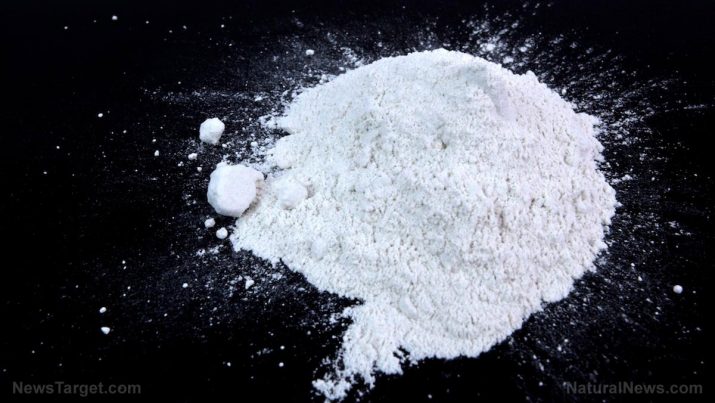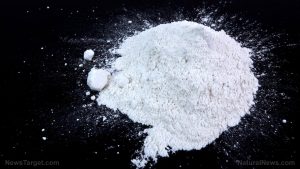
Zinc Stearate – toxicity, side effects, diseases and environmental impacts
Thursday, November 16, 2017 by Janine Acero
http://www.naturalpedia.com/zinc-stearate-toxicity-side-effects-diseases-and-environmental-impacts.html

Zinc stearate is a soft, fine, white, waxy powder with a slight characteristic odor. It has been known to have antibacterial and antiviral properties, used as a flatting agent in the cosmetics and personal care industry. It is an insoluble salt mixture of zinc oxide with zinc salts of stearic and palmitic acids. Because of these components, zinc stearate is also used as a lubricant on the surface of rubbers and as a release agent on plastic molds. Its waterproof properties are also utilized in concrete, rock, wool, paper and textiles.
Zinc stearate has the molecular formula of C36H70O4Zn.

List of known side effects
This substance can be absorbed into the body through inhalation and ingestion, as well as contact through the eyes and skin. It is known to irritate the eyes, skin (minimal irritation) and upper respiratory system, which may result in fits of coughing.
Zinc stearate also has acute toxicity in aquatic ecosystems that may cause long-term harmful effects.
Despite these effects, zinc stearate is classified as not carcinogenic to humans. It is also non-mutagenic (affecting DNA) and non-teratogenic (affecting the development of an embryo or fetus). Furthermore, the United States Food and Drug Administration (FDA) has included zinc stearate on the list of substances that are “Generally Recognized As Safe” (GRAS) as permitted food additive.
Body systems affected by zinc stearate
Most zinc compounds are not toxic and don’t show any symptoms with acute exposures. However, moderate toxicity can result in nausea, vomiting, abdominal pain and diarrhea. Respiratory irritation and bronchospasm may develop after inhalation.
Based on animal studies with rat and mouse models, high doses of zinc stearate affect the lungs and thorax. Additionally, it causes blood hemorrhage and chronic pulmonary edema or congestion.
Items that can contain zinc stearate
Some of the common uses for zinc stearate are:
- As lubricants and softeners to rubber products.
- As a paint drying agent.
- As lighting agent to textiles.
- As stabilizers for PVC (polyvinyl chloride) plastics.
How to avoid zinc stearate
For occupational exposure, it is advised to avoid inhalation of the fine dust and mist, and keep it away from the eyes by wearing protective goggles. In case of inhalation, keep away from the site of the exposure and find fresh air. If it gets to the eyes, remove contact lenses (if applicable) then rinse with plenty of water for several minutes. Do not eat, drink or smoke in the workplace. Rinse your mouth immediately after contact and drink one to two glasses of water.
Zinc stearate should also be kept away from open flames.
Where to learn more
Summary
Zinc stearate is a soft, fine, white, waxy powder with a slight characteristic odor.
Zinc stearate is an insoluble mixture of zinc oxide and stearic salts, which are found in makeup products such as eyeliner, eyeshadow, mascara, lipsticks, blushers, face powders and foundations. They are also used in fragrances, deodorants, and hair and skin care products.
Zinc stearate is a known lubricant and softener in rubber products and stabilizers for PVC plastics.
Zinc stearate can irritate the eyes and skin (minimal), as well as cause respiratory tract discomfort when inhaled.
Zinc stearate is classified as non-carcinogenic, non-mutagenic and non-teratogenic.
Sources include:
Tagged Under: Tags: Zinc stearate





